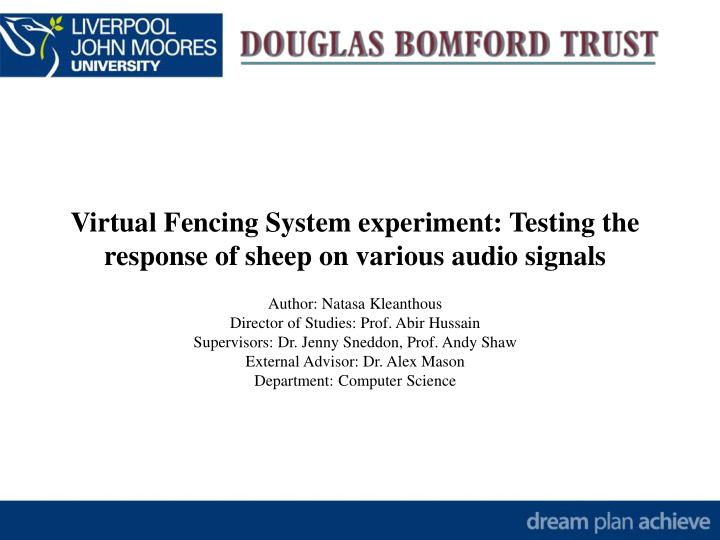



Virtual Fencing System experiment: Testing the response of sheep on various audio signals Author: Natasa Kleanthous Director of Studies: Prof. Abir Hussain Supervisors: Dr. Jenny Sneddon, Prof. Andy Shaw External Advisor: Dr. Alex Mason Department: Computer Science
What? • Create a virtual fencing system • Remove physical barriers and replace them with “virtual” barriers Why? • Improve biodiversity • Prevent overgrazing • Reduce soil erosion and water pollution
How? • examine the response of the animals on the acoustic cues: which sounds restrict them access to an attractant? • Five Hebridean sheep were used in the pilot experiment • Frequencies between 200 Hz – 17000 Hz • A sound cue was emitted manually from the laptop to the speakers when the animal was approaching the attractant
Preliminary results and conclusion • High frequencies can cause the desired reaction (ex. 17000 Hz with 86.67% success) • White noise was 95% successful however it caused stress to the animals • The animals’ temperament is important: timid animals are easier to be trained in comparison to stronger animals in character • Next experiment will use a larger cohort of animals with focus on frequencies higher or equal to 17000 Hz • White noise will be emitted only when necessary
Recommend
More recommend